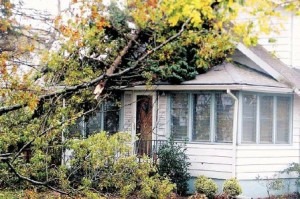When you know that a storm or hurricane is heading to your locality, you can take immediate steps to prepare your family and home for any eventuality. Preparing means you have to ready yourself emotionally, physically and financially. Take your clue from the recent devastation in the U.S. when hurricane Sandy hit the east coast.
First up, be strong and brave for your family especially if you have kids. Stay calm and prepare the things you will need should the worst happens.

Focus on the basics first. Have cash ready and buy groceries in advance, fill up your gas tank and stock up water as well. For your communication devices such as mobile phones and other electronic items, make sure to fully charge them so you can reach out to others in case power is cut off in your place. Also, prepare your batteries for use in flashlights, mobile phones, digital cameras and radios.
If you have bills that need to be paid, pay them early while you still have time. You may opt to enroll in mobile or online banking at this time for your convenience.
The next most important step is to make an inventory of all your items at home. Every homeowner needs to do this even when no hurricane or any natural disaster is in sight. This is very helpful because in the event your home is damaged, you have a checklist ready to submit to your insurance agent and company.
In addition to listing your personal items, it is strongly recommended today to take photos of them as well as of your entire house. You will need these images in the claims processing stage to show your insurer the condition of your home and personal possessions before they were damaged.
Preparing an emergency kit is as vital. This should include your very important documents such as your insurance policies, tax information, inventory and personal papers. You should also put in here your cash and if possible, use a plastic envelope with a tight seal to prevent water from getting in.
If you want to make sure that your home is fully covered for damages, you may want to purchase additional cover specifically for flood and water damage. A basic home insurance would normally cover just wind and water damage caused by heavy rain that goes through your roof, holes in the walls, windows and doors. A flood policy is a separate one.
You may also want to ask your insurance agent in advance about the documents your insurer requires when filing a claim after your home gets badly affected by the storm or hurricane. This will save you time in filing your claim in case your house gets damaged. Do take photos of the damage as well so you can send them right away as you file your claim.
Remember to always learn about your home insurance coverage and the other plans available. Click here to find out more.
Photo via northjersey.com